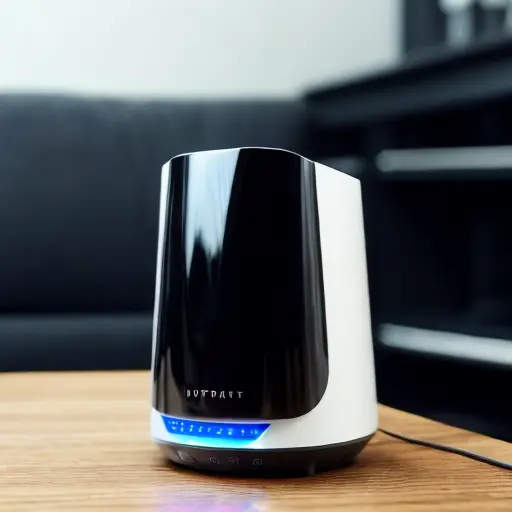Understanding the Risks: Why Default Security Mode is the Least Secure Choice for Home Wireless Routers
Picture this: you've just set up your brand new home wireless router, feeling like a tech-savvy superhero ready to conquer the digital world. But hold on tight, because there's a villain lurking in the shadows: the default security mode. This sneaky little setting may seem harmless, but trust me, it's the equivalent of leaving your front door wide open with a neon sign saying, 'Hackers welcome!' Seriously, it's like putting a padlock on your bike and then leaving the key in the lock. So, my dear readers, let's dive into the treacherous world of default security mode and uncover why it's the least secure choice for your beloved router. Buckle up, folks, we're about to embark on a wild ride through the dangers of cyberland!
WEP: The Outdated Security Mode Vulnerable to Attacks
The least secure choice when a home wireless router is configured is the 'Open' security mode. In this mode, the router does not require any authentication or encryption, allowing anyone within range to connect to the network without any restrictions. This means that not only can unauthorized users easily access and use the internet connection, but they can also potentially gain access to sensitive information on connected devices. It is highly recommended to avoid using the 'Open' security mode and instead opt for stronger security options like WPA2 or WPA3, which provide encryption and authentication to ensure a safer and more secure wireless network.
Imagine you're in a time machine, traveling back to the early 2000s when flip phones were all the rage and frosted tips were considered cool. Well, my friends, that's the era where WEP security mode belongs. It's like the outdated fashion trend that just won't die, except instead of embarrassing photos, you're left vulnerable to cyber attacks. WEP, or Wired Equivalent Privacy, may have once been the go-to security mode for home wireless routers, but let me tell you, it's about as secure as using a feather duster to protect your valuables. Hackers can crack WEP encryption faster than you can say, 'Oops, I think I left the front door unlocked.' So, let's bid farewell to this relic of the past and embrace the wonders of modern security. Trust me, your router will thank you!
'WPA: A Step Towards Improved Security

In the ever-evolving world of technology, it's crucial to stay one step ahead of the game, especially when it comes to securing our home wireless routers. Enter WPA, or Wi-Fi Protected Access, the hero we've been waiting for. Unlike its outdated counterpart, WEP, WPA is like a fortress guarding your digital kingdom. It's the security mode that says, 'Not today, hackers!' With stronger encryption algorithms and dynamic keys that change regularly, WPA takes security to a whole new level.
Gone are the days of using a feather duster to protect your valuables. WPA is like upgrading to a state-of-the-art security system with laser beams and fingerprint scanners. It's the peace of mind you deserve in this digital age. So, why settle for the least secure choice when you can have the best? WPA is the answer to all your security woes, ensuring that only authorized users can access your network while keeping those pesky hackers at bay.
But wait, there's more! WPA isn't just about beefing up your security; it also brings convenience to the table. With features like WPA-PSK (Pre-Shared Key), you can easily share your Wi-Fi password with trusted friends and family without compromising your network's safety. It's like having a secret handshake that grants access to the digital wonders of your home.
So, my fellow tech enthusiasts, let's bid farewell to the days of weak security and embrace the power of WPA. It's time to take control of our digital fortresses and ensure that our home wireless routers are locked down tighter than Fort Knox. With WPA by our side, we can surf the web with confidence, knowing that our personal information and digital lives are safe and sound. Upgrade to WPA today and join the ranks of the security-savvy!
but Still Prone to Exploits'
The fun fact is that the least secure choice when configuring a home wireless router is actually the 'Open' security mode. This mode allows anyone within range to connect to the network without any authentication or encryption. It's like leaving the front door of your house wide open for anyone to walk in and use your internet! So, remember to always choose a more secure option like WPA2 or WPA3 to protect your network and keep those internet moochers at bay.
While WPA may be a significant improvement over its predecessor, it's important to remember that no security measure is foolproof. Even with its robust encryption and dynamic keys, WPA is not immune to exploits. Hackers are constantly evolving their tactics, finding new vulnerabilities to exploit. It's like playing a never-ending game of cat and mouse, where staying vigilant is key. So, while WPA is a step in the right direction, it's crucial to stay updated with the latest security patches and best practices to keep your home wireless router as secure as possible. After all, in the world of cybersecurity, there's no room for complacency.

